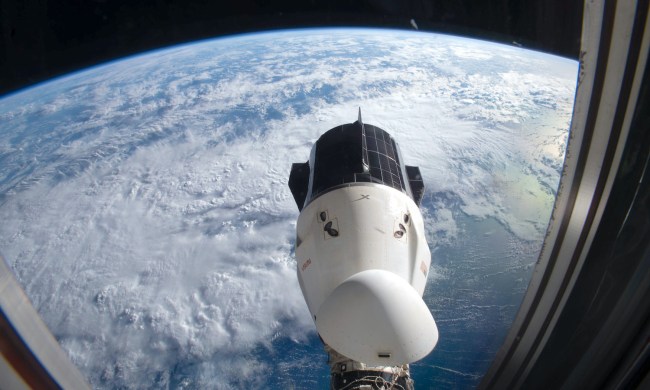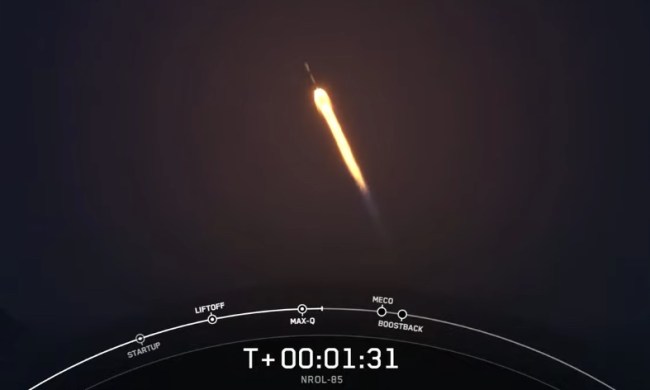SpaceX has pretty much perfected the art of landing a 40-meter-tall, 20-ton booster back on terra firma. Now it’s honing its skills for catching the nose cone, too.
It’s all part of the private space company’s effort to build a reusable rocket system aimed at cutting the cost of space travel.
Earlier this week, SpaceX successfully deployed a $250 million AMOS-17 communications satellite for Israeli firm Spacecom using its Falcon 9 rocket as the delivery vehicle.
As the rocket deployed the satellite, the fairing — the cone at the top of the rocket that holds the payload — detached as planned, before falling back to Earth in two parts.
SpaceX is currently using a giant net on a single ship, called Ms. Tree (formerly Mr. Steven), to catch one of the fairing pieces. Once it has perfected the procedure, it’ll deploy a second ship to catch the other half, too. This means it’ll be able to keep the entire fairing out of the corrosive seawater and also protect it from impact damage. At $6 million a pop, the savings for the fairing alone will be significant.
This week’s mission saw one half of the fairing make a perfect landing on Ms. Tree’s net. It was the second successful catch for SpaceX’s ship, the first one taking place in June 2019 following the launch of the Falcon Heavy rocket.
SpaceX posted a video of Tuesday’s achievement on Twitter.
Rocket fairing falls from space & is caught by Ms Tree boat pic.twitter.com/nJv0Ry1iKk
— Elon Musk (@elonmusk) August 7, 2019
Many earlier efforts to catch the fairing ended in failure, including this attempt in January 2019 when it came tantalizingly close to nailing its first successful landing. But success with the two most recent efforts indicate that SpaceX is making real progress with the system.
The all-important ship is 62 meters long and 10 meters wide, and holds a net covering an area of about 3,700 square meters. As a complete piece, the fairing of the Falcon 9 rocket is about 13 meters tall and 5 meters wide, and weighs around 1,000 kilograms.
SpaceX incorporated cold nitrogen thrusters into both sections to enable a steady descent. The system then deploys a GPS-equipped steerable parafoil at around five miles above sea level.
Catching space equipment as it falls back to Earth is apparently becoming a thing. Small-satellite launcher Rocket Lab released a video this week showing how it wants to use a helicopter to pluck its first-stage booster from the sky as it floats down with a parachute.


